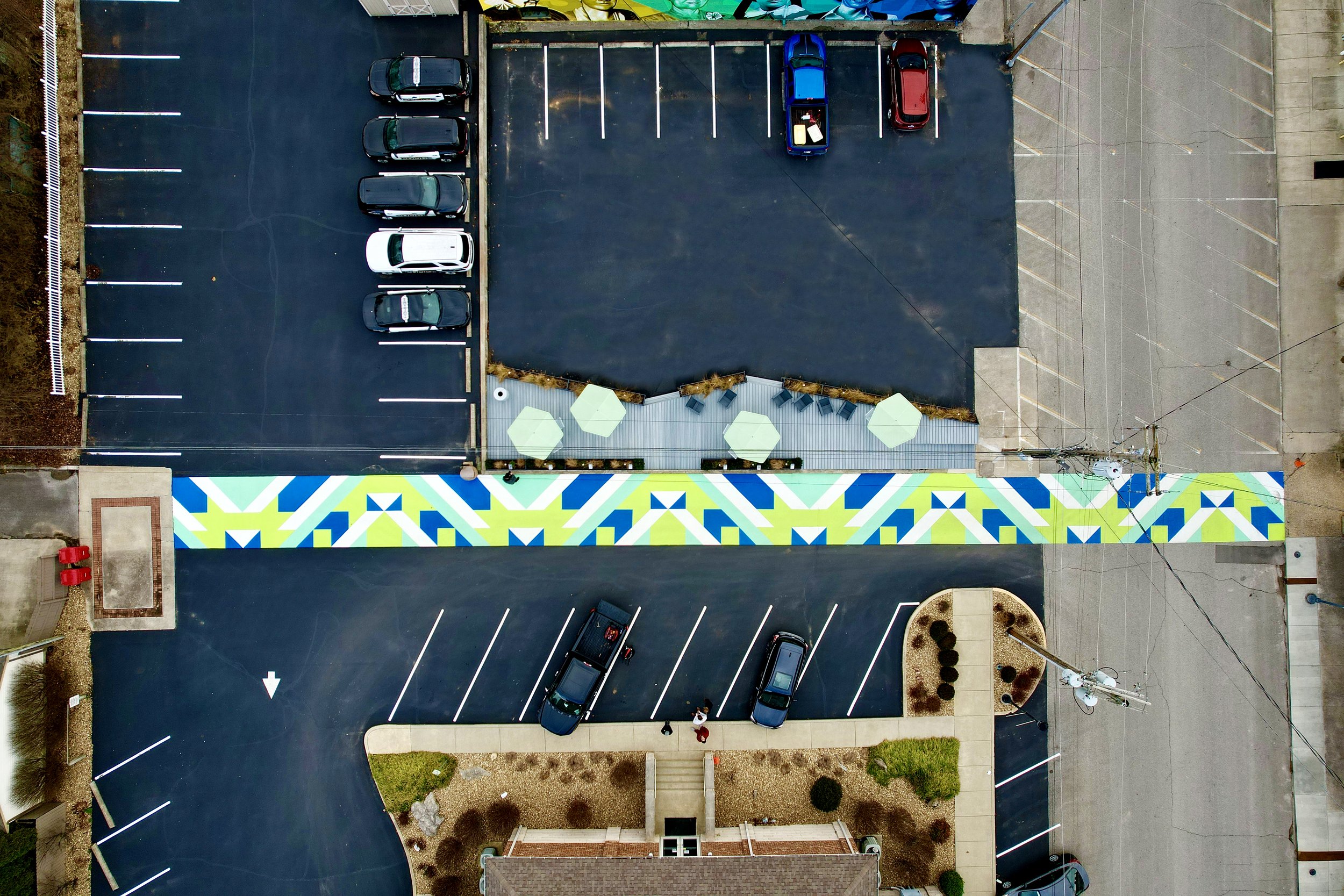A park that celebrates pioneering women
A new pocket park in Salem, Indiana, celebrates pioneering women from the town with a large mural framing one side of it.
Designed by multi-disciplinary studio LAA Office, Heritage Park is a striking stripe of colour linking two local landmarks - Salem’s Central Square and the John Hay Centre, a 5-acre campus with a historical museum and period buildings.
Heritage Park with it’s colourful pedestrian path and seating area. Photo credit: Tony Vasquez
The mural, by artist Rafel Blanco, is a focal point to be enjoyed from a new deck and garden in the park. The six women honored in it include Sarah Parke Morrison, who was the first female graduate of Indiana University and subsequently its first female faculty member; Emma Christy Baker - first black, female police officer of the Indianapolis Police Department; Lula “Desse” Rudder - first licensed female pharmacist in Indiana; Terry Hall - a highly successful N.C.A.A. women’s basketball coach; Dr. Mary Reid Lusk - a self-made neighborhood doctor and participant in the region’s underground railroad operations, and Bradie Shrum - a dedicated child educator and namesake of the local elementary school where she taught for 60+ years.
Heritage Park continues LAA Office’s interest in repairing urban fabric through public art and placemaking initiatives. Recently completed past projects of this type include their 6th Street Arts Alley project in Columbus, Indiana.
Situated at the heart of the neighborhood and across from City Hall, Heritage Park is designed as both a space for gathering and viewing art. LAA Office uses the term “Barn Quilt Urbanism”’ to define their conceptual approach in Salem, which unites the landscape into an outdoor museum or art trail.
Photo credit: Travis Perry.
“Conceptually, we imagined the project as a way of creating a linear stitch in the town’s urban fabric. We were influenced by the regional folk art tradition of barn quilting,” says LAA Office Co-founder Daniel Luis Martinez . “Barn quilts are a rural phenomenon produced by the stewards of the land upon which they appear. We wanted to adopt the aesthetic language and organisational framework of barn quilts in an urban setting because we knew it would resonate with the citizens of Salem.”
Implementation of the barn quilt pattern on the ground in Salem was completed by LAA Office with the help of community members and students from Indiana University (where Martinez teaches). Volunteers mingled with students , each learning from one another and about the stories of strong, female role models with ties to Salem.
One of the big requests from stakeholders was for a public seating area because Salem has so few. Photo credit: Tony Vasquez
Say Loquidis and Martinez, “We see stitching as a way of mending urban voids and bringing elements once separated by that void together. Using this framework, we also realised that the stitch itself has the capacity to become a pathway or trajectory, since it constitutes a new physical element within the urban fabric.”


